Marshall Tropical Ecology
Belize - March & April 2005
For more trip pictures, click here. Click here for some extra project info. Class powerpoints, click here.
Notes from a Journal...
27 March 05
Today is a travel day. Some of us are quite tentative to be flying, it's been years. Others are first-timers. A good bit of turbulence forced some of us to consider our intestinal fortitude, but fortunately no one had any urges contrary to swallowing. As we approached the shoreline of Belize, small islands surrounded by deep blue and remarkable turquoise waters began to appear. After touch-down, we were able to visit the Belize Zoo. The wide variety of animals at the zoo is simply astounding. A four hour bus ride to the lodging gave us all time to let our new situation sink in completely. We are in Belize! Night herping found us a Rio Grande leopard frog (Rana berlandie). It's a pretty impressive animal and is similar in appearance to the Northern leopard frog found back home in WV.
28 March 05
After some early morning birding, we departed Belize City and headed for Southwater Caye. A quick boat ride out to sea led us to our destination. The island is like a tropical paradise; the water is crystal-clear and the sands are white. There, we met our guide who was very knowledgeable on all things island related. Snorkeling was today's main activity. We all learned the ins and outs of the sport. Spotting creatures like moray eels, parrotfish, eagle rays and coral are absolutely amazing. This is definitely a first for most of the group. Besides snorkel expeditions, we've been very actively spotting wildlife all about the islands. There are several types of geckos here: St. George's gecko (the only endemic), house gecko and tokay gecko. We've also seen crabs and some other land creatures.
29 March 05
Today was the first dive of the trip. Anxiety ran high among novices, though we've been practicing skills in the pool back home. Everything is so much different out in the sea. The salt water is also a big change for us. Buoyancy control was the biggest issue for most of the group, but that's just something that will come with practice. The group that didn't go diving spent their extra time doing invertebrate and fish snorkel surveys. Fishes include sergeant majors, cocoa wrasse, Spanish hogfish, squirrelfish and countless grunts. It is a good way to get more practice snorkeling as well as help out with some of the research aspects of the class.
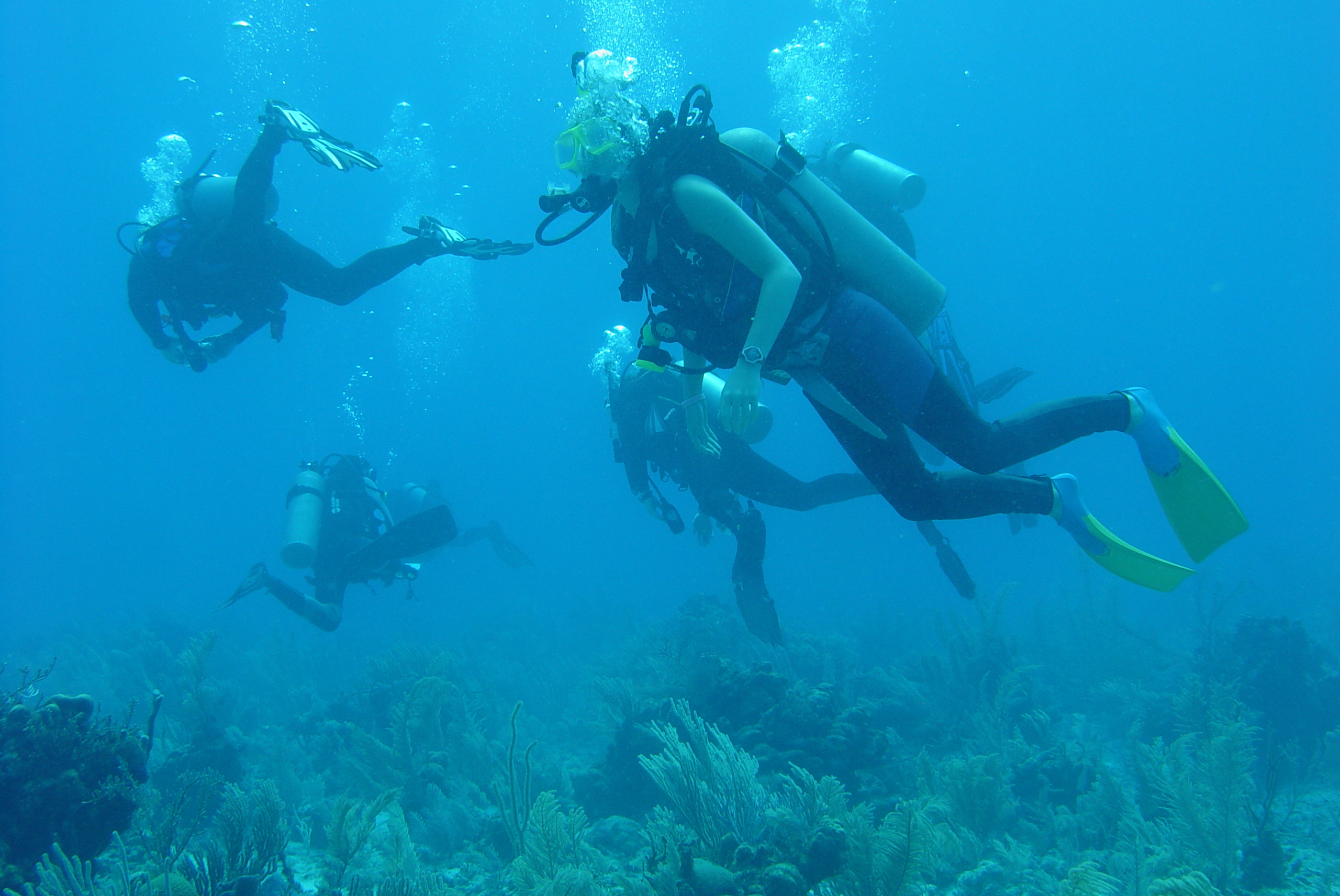
30 March 05
This morning, Dr. Evans led a plant walk. He's a phenomenal botanist. We were informed that coconut palms are an introduced species, and that shocked a lot of people. Everyone just kind of imagines coconut palms lining every tropical island, but that wasn't the case until their introduction into the Caribbean. Mangroves are the real champions of the island. There is an intimate connection between islands, mangroves and the reefs that surround them. Island development (commercially) really harms the fragile ecosystem and too much can definitely be a bad thing. Beach erosion and death of coral reefs can result from mangrove deforestation. Diving and snorkeling took up the rest of the day. It's the last dive day, so we had to make the most of it.
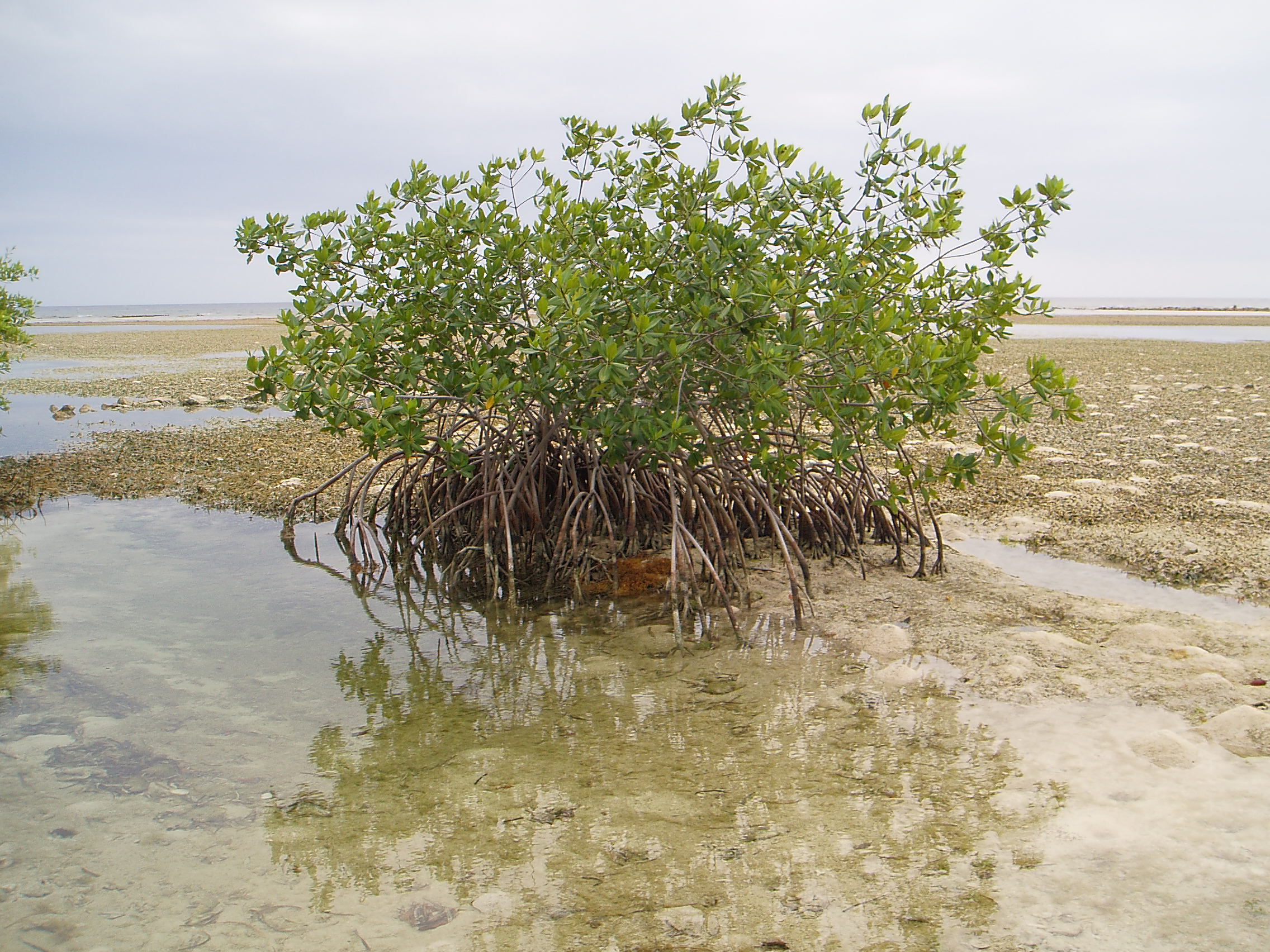
31 March 05
A boat ride out to Twin Cayes was the day's adventure. The cayes are completely covered in mangroves. Snorkeling around was quite exciting as there is a whole host of new aquatic life to behold. The most exciting find was a batfish. This is an odd shaped bottom dweller. We also saw some very large starfish as well as sea urchins. After we got back, we had another ethnobotany walk. These are always interesting and informative.
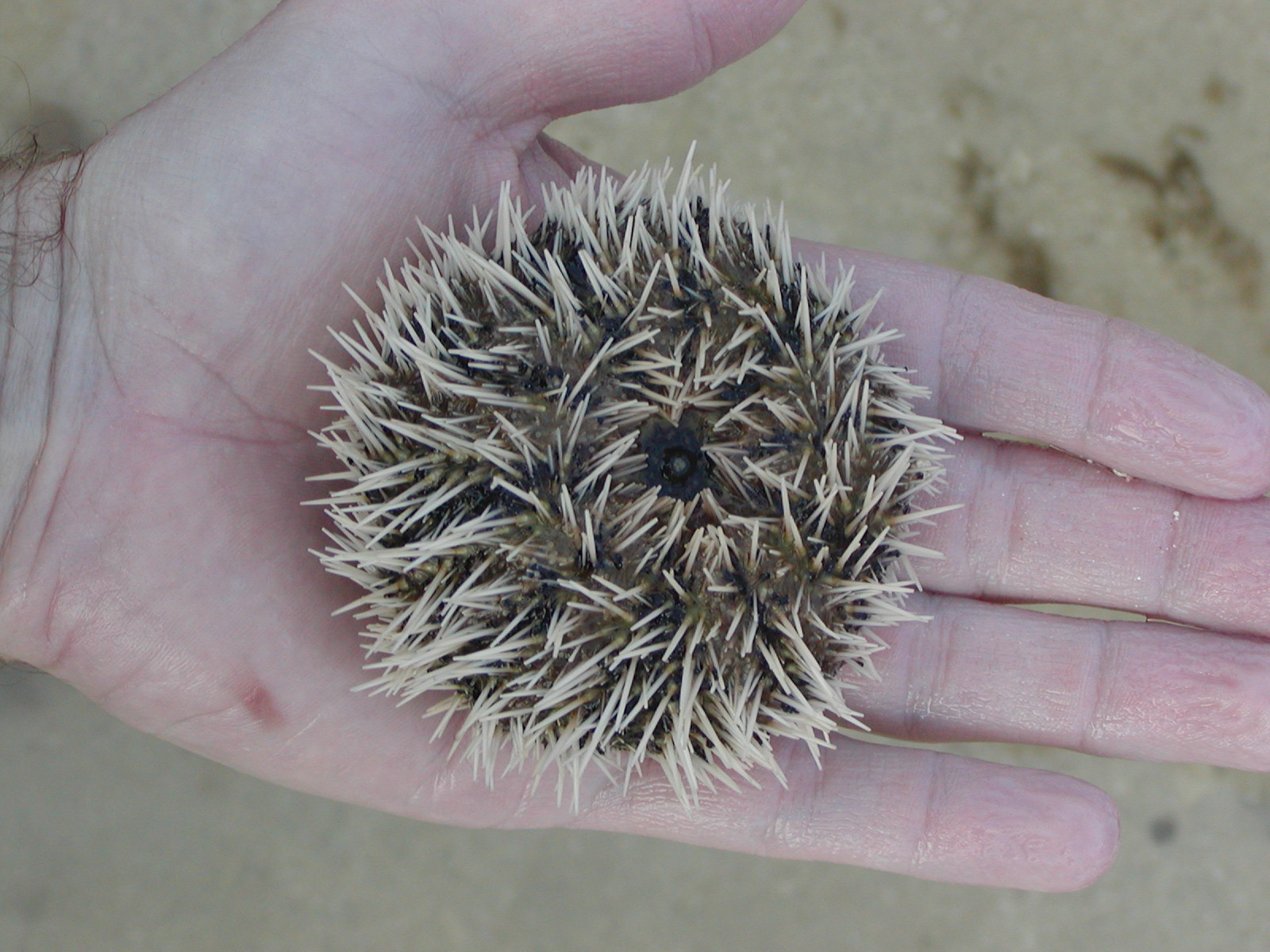
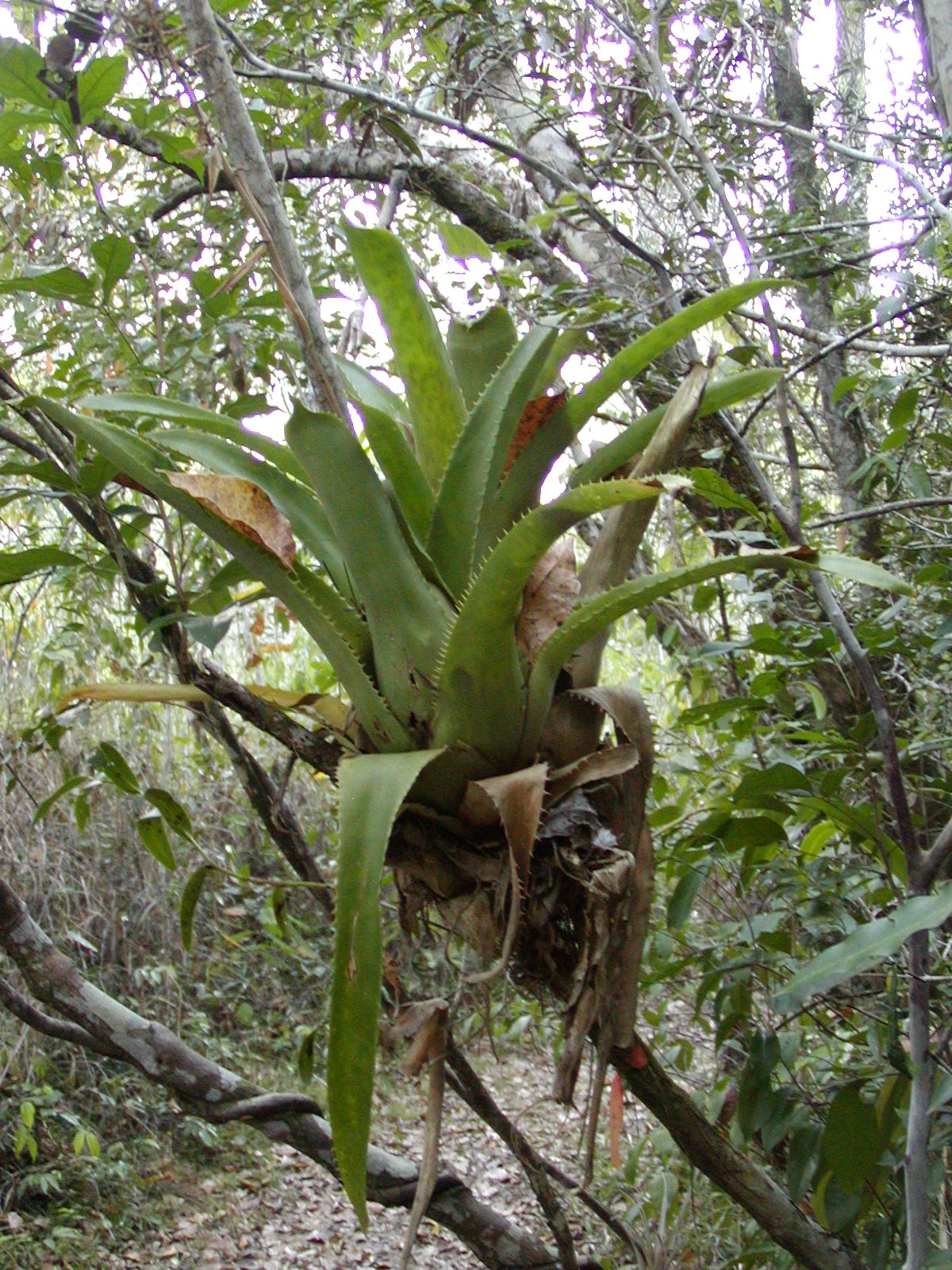
1 April 05
Today we left the island. Many of us had mixed emotions for this departure. The island really was like a tropical paradise. We're now heading for the inland forests of Belize. It will definitely be a change of pace. On the long bus ride to Blue Creek, we stopped to see the Mayan ruins of Lubaantum. Invariably, when we got off the bus, everyone had the same sensation - it is overwhelmingly hot here! When we arrived at Blue Creek, after putting our gear away, several people decided to cool off with a dip in the creek. Swimming in the water was definitely soothing to our overheated bodies. Tonight we took a herp walk in the forest, and we found a nice red-eyed tree frog.


2 April 05
This morning, a truncate group awoke at 3:00 am for a strenuous excursion to the top of a nearby mountain. The highest point reached was 1270 feet. At times, the trail led almost straight up, but luckily we didn't have any accidents. The view was to die for. We also saw some cool artefacts like a grinding stone that Mayans would have used to grind corn or other cereal grains. A plant walk in the rainforest is much different than one on the island. There are so many useful plants, and our guide told us about a lot of them that we encountered. We also went into a nearby cave. The walk there was quite strenuous, but taking advantage of karst country was well worth it. The region hold lots of limestone, so caves are actually pretty ubiquitous here.
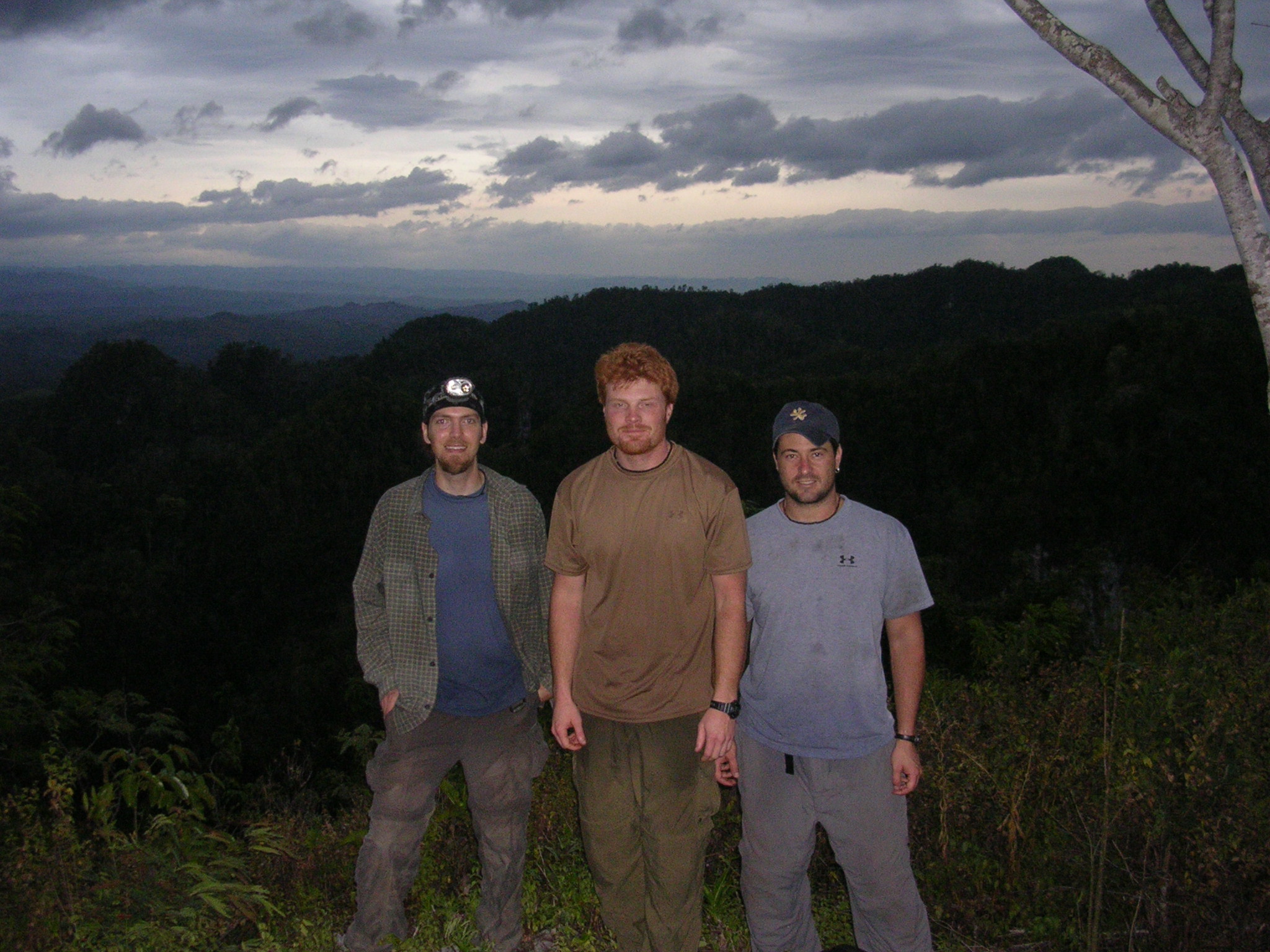
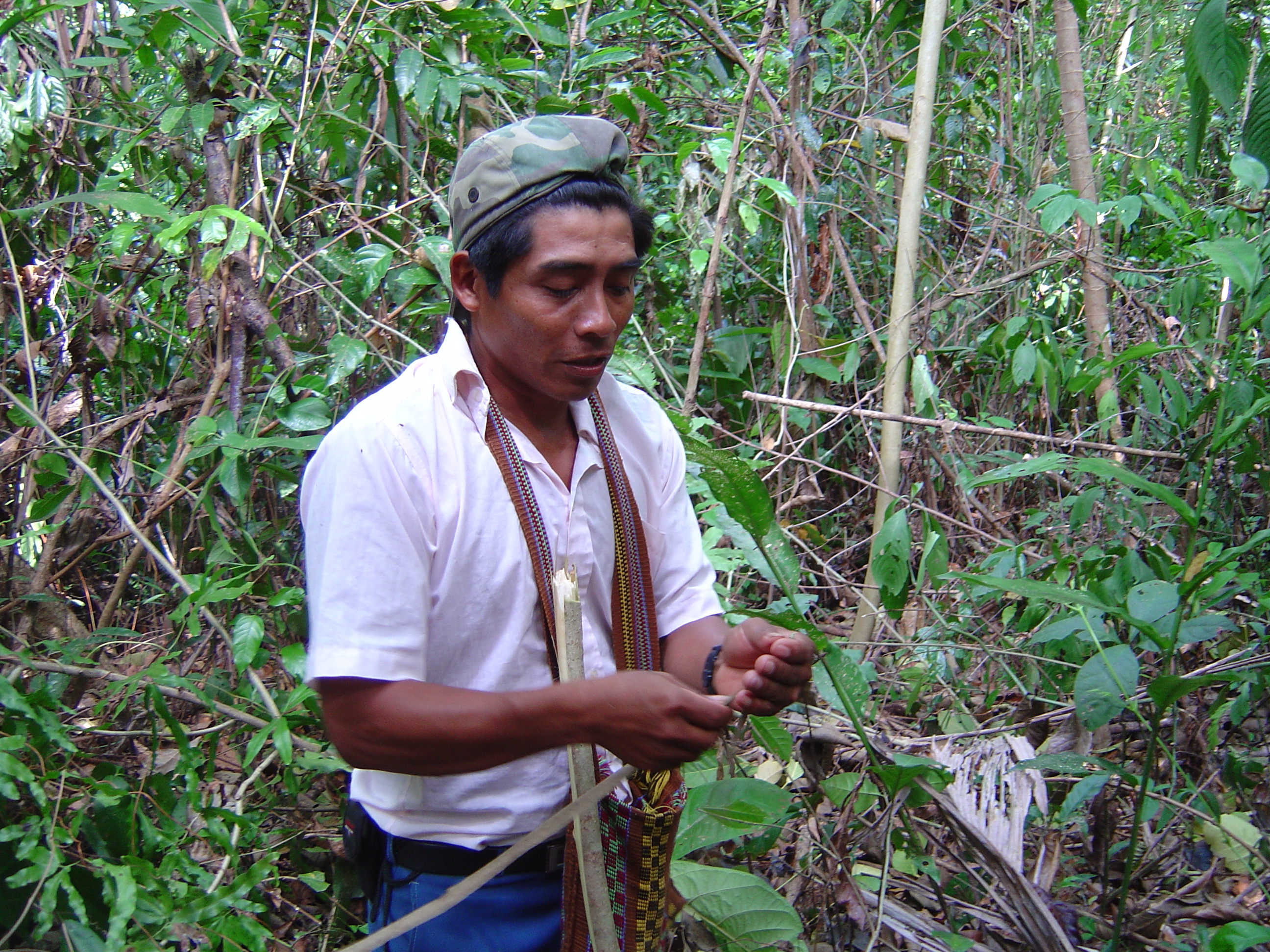

3 April 05
This morning, we went out looking for iguanas. Our guides showed us the easy way to catch them. When they are resting in tree branches above water, all you have to do is shake them from their perch. When they hit the water, they quickly swim, or sink, to the bottom and grasp a large rock. This is some sort of predator avoidance tactic, but they weren't ready for human predators with snorkel gear. It's so easy to swim down to where they are and pluck them from the rocks on the bottom. When you bring them to the surface, they're surprisingly docile. When we got back to Blue Creek, we took on some local Mayan children in a friendly soccer match. Believe it or not, but they absolutely destroyed us. Clearly we didn't have Pele, Beckham or anyone else of that caliber on our US team, but they have some amazing ball skills. You can see how much they enjoy the game in the way they play. Running up the score wasn't an issue. They were just happy to have someone to oppose them.
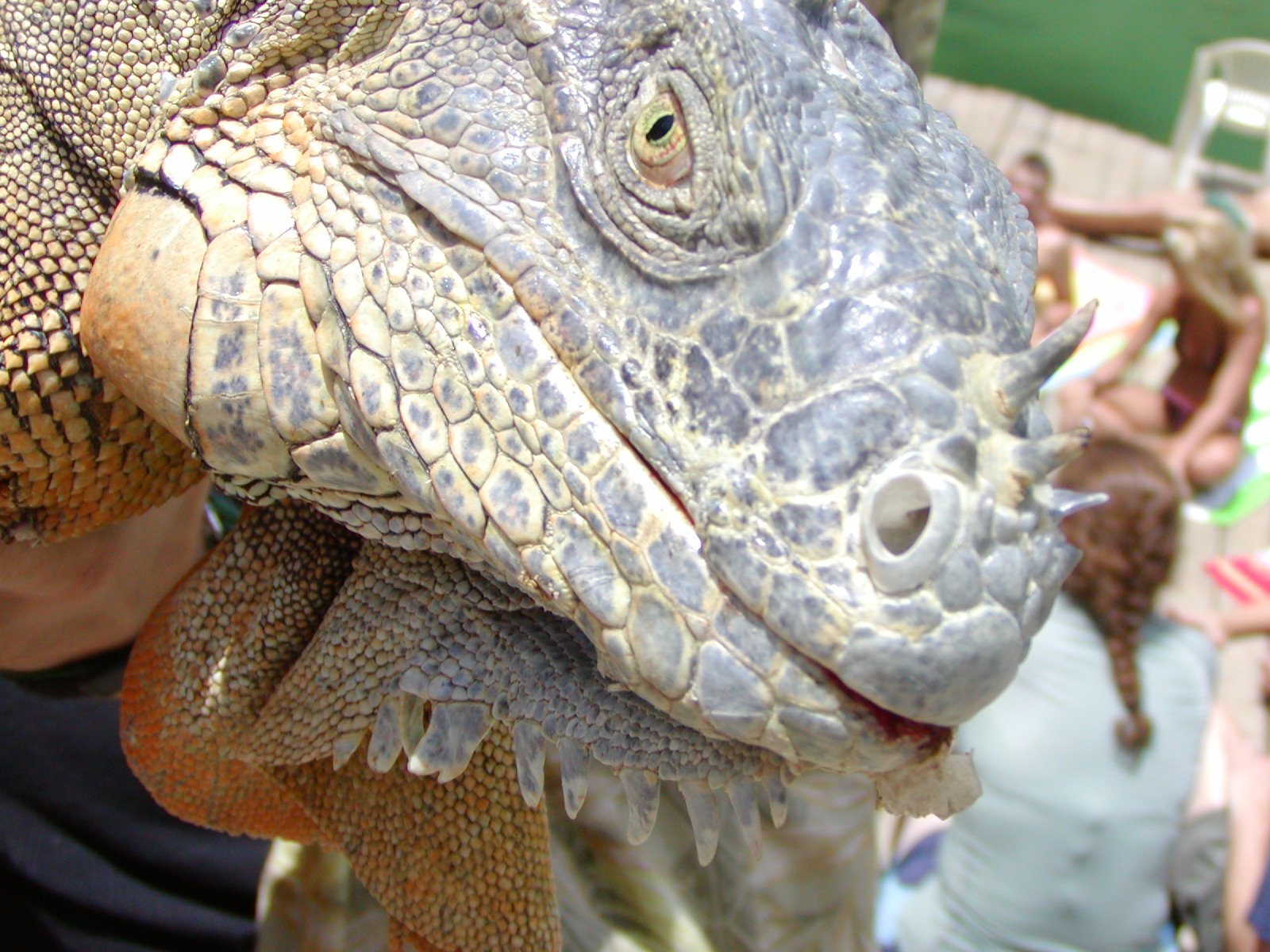

4 April 05
Today, we make our way back home. It's a sad day for a lot of us. We've had an incredible trip. The experiences that we've shared over the last few days have been unbelievable. It was definitely nice to get to visit the tropics, but this was so much more than a spring break vacation. We learned so much every day, and we got to interact with locals on their own terms. The research that we took part in may not be ground-breaking science, but it go some of us interested in science, whether for the first time or the tenth time. Hopefully we can share our experiences with friends and family when we get home, but a bigger hope is that people can experience the same things we have for themselves.